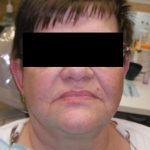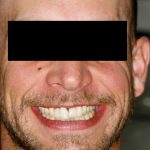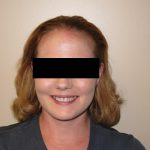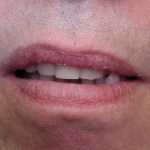There are a number of different names for the fixed removable cases being fabricated today: All-On-4, ProArch Solution, Revitalize, Deim, Teeth Xpress, in addition to other systems you may be using. The constant with all of these cases is you are going to be removing terminal dentition and fabricating an appliance that will change the patient’s appearance and oral function. The challenge we face is how do you know where to place the denture teeth?
The “Teeth in the Same Day” procedure that is being popularized is, in my opinion, an extremely esthetically driven surgical procedure. Many of the procedures the surgeon follows will be based upon your prosthesis and the remaining oral anatomical structures. It is imperative that you arrange the tooth length, position, arch form, and occlusion following a systemized approach that the dentist, surgeon and you collaborated on.
This the system that I have used with great success for every case we fabricate to achieve that “Oh wow smile”. As I mentioned earlier, this is an esthetically driven surgical procedure, so I always start with a series of photos.
The first photo I start with is a Full-face hairline to chin lips together.

Evaluation of Vertical Dimension Good No Change___ Open VDO by ___mm Close VDO by ___mm
Since we are dealing with terminal dentition, I am looking at Vertical Dimension of Occlusion or VDO. I am sure that the mere mention of determining VDO with a photo will cause alarm with some people; however, there is no published article that proves that VDO can be determined accurately for all people. There are a lot of articles that state methods and techniques to assist you, but none of them can say theirs will determine a repeatable VDO for different patients exactly, time after time. I have found this method to work, for the patients I have been part of the treatment plan, without any issues.
Close-Up high smile E line – provides information on gingival exposure and lip movement during a high smile.
 High Smile Line: At dental cervical / No tissue showing / Excessive tissue showing __mm
High Smile Line: At dental cervical / No tissue showing / Excessive tissue showing __mm
I find this photo especially useful. I need to know the mobility of the patient’s maxillary lip. I cannot have the transition line between the appliance and the tissue exposed during a high smile. The transition line exposure will be an esthetic nightmare. Knowing the lip mobility will allow the surgeon to determine the amount of hard tissue that may need to be removed. If minimal tooth display is present, we may decide to lengthen the incisal edge positions.
Close up big smile- shows buccal corridors
 Buccal Corridor: These are the areas in the posterior of both sides of the patient’s mouth. It is the area between the buccal surfaces and the inside of the cheeks. I am looking for darkened hollow areas on the facials and symmetry issues. I then indicate the changes to the respective sides of the mouth.
Buccal Corridor: These are the areas in the posterior of both sides of the patient’s mouth. It is the area between the buccal surfaces and the inside of the cheeks. I am looking for darkened hollow areas on the facials and symmetry issues. I then indicate the changes to the respective sides of the mouth.
Right side: Good – No Change / Negative- Widen by ___mm / Excessive- Narrow by ___mm
Left side: Good – No Change / Negative- Widen by ___mm / Excessive- Narrow by ___mm
Close-up Lip at repose – Vertical incisal length position
 Vertical incisal length position shows relationship of upper incisors to upper lip. How much of the maxillary incisors are showing with the lip at rest. I use this photo as a guide for lengthening or shortening the tooth display. This photo along with the High Smile Line photo help me choose the vertical length of denture tooth I will be selecting for the transitional denture.
Vertical incisal length position shows relationship of upper incisors to upper lip. How much of the maxillary incisors are showing with the lip at rest. I use this photo as a guide for lengthening or shortening the tooth display. This photo along with the High Smile Line photo help me choose the vertical length of denture tooth I will be selecting for the transitional denture.
No change / Lengthen / Shorten # ____ by ____mm
These photos are a general guide that I follow in the selection and fabrication of the transitional denture. Remember, the reason that the patient’s teeth are being removed is the dentist and surgeon has determined that they are terminal. Being in a terminal state, they have most often moved from an ideal position. By using these photos and answering these esthetic questions we can clearly communicate as a team in millimeters how we plan on restoring the patient’s smile.
A Certified Dental Technician (CDT) will review the photos to evaluate what changes to make to the current dentition. The knowledge and experience of a CDT benefits the dental team in many ways. The technician can provide valuable input on esthetic options, the type of materials to use, costs, evaluations, implementing a plan, and determining a schedule to design and execute a complete restorative solution.
All Photos by Jerry Ulaszek, CDT: © Artistic Dental Laboratories
Jerry Ulaszek, CDT
 2017 NADL President
2017 NADL President
Jerry Ulaszek, CDT is the President and Owner of Artistic Dental Laboratories in Bolingbrook, Illinois, which has been in operation since 1981. As a business owner, and as the NADL President 2017, he is dedicated to promoting and advancing the high standards and ethics of the dental laboratory industry.
Jerry’s commitment to consistently providing the highest quality of product and services qualifies the lab as one of only three Dawson Academy dental laboratories worldwide and one of only 50 DAMAS certified labs in the USA. Jerry can proudly say that all Artistic products are made in the USA.
Jerry has been an active member of the NADL since 2012; he has served on several committees and on the NADL Board of Directors. He contributes regularly to the Foundation for Dental Laboratory Technology and is currently serving as the President of the Illinois Dental Laboratory Association.
The National Association of Dental Laboratories is a trade association representing dental laboratories. NADL is the unified voice for the dental laboratory industry, supporting the dental profession and serving the public interest by promoting high standards.







